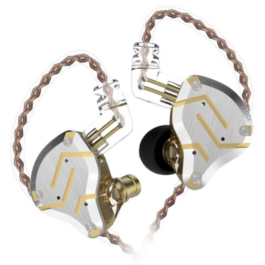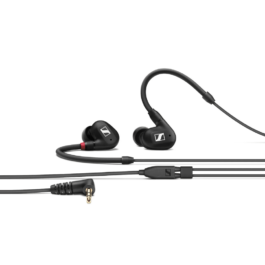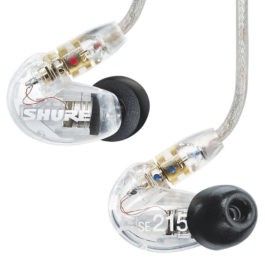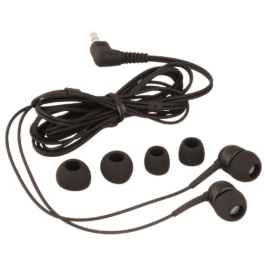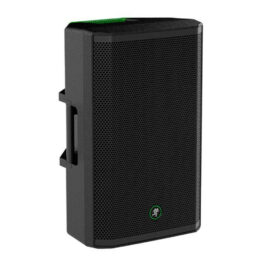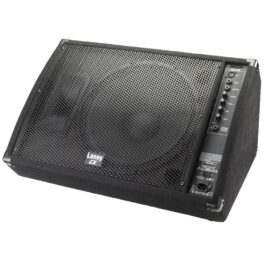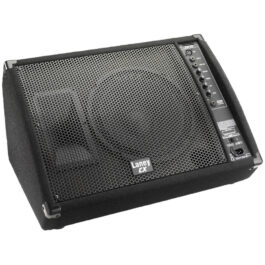
When you’re new to the world of playing live gigs, getting to grips with on-stage monitoring is often the first and biggest hurdle to overcome. Between stage monitors, side fills, and amplifiers, there can be a lot to contend with. Not to mention the acoustics of the room, or the skill level of the audio engineer.
It is easy to jump to the conclusion that a fresh set of in-ear monitors is the answer to all your woes, but it may be a little more nuanced than that. Let’s take a look at how some of these types of stage monitors work, and how they react in conjunction with each other, and what the right point to jump to an in-ear monitor setup may be.
Stage Monitors (Wedges)
The most common form of live monitoring; essentially a full-frequency speaker placed on the floor, angled up at the performer. While this can and does work well, it is vulnerable to a number of potential issues, such as feedback from on-stage microphones, and being over-saturated having to suffice the monitoring needs of multiple performers.
If you are playing on relatively quiet stages, with between one and two performers per monitor, wedges are a practical, versatile and cost-effective option.

In-Ear Monitors
In-Ear monitors are widely accepted as the optimal form of stage monitoring, delivering your personal mix directly to your ears. This, however, doesn’t come without its downsides. Complex setups, relatively high margin for error brought on by batteries and busy wireless frequencies, and not to mention, cost, all means it isn’t quite the be-all and end-all monitoring option.
These hurdles are often too much to overcome when just starting out, and in some live situations, may just not be worth the effort. But if you or your band is playing larger stages at high volumes, and struggling with clear monitoring or feedback issues, in-ear monitors are absolutely the tool for the job.

Side Fills
Side fills are essentially a set of speakers that are similar to the Front of House speakers that are pointed toward performers from the side of the stage. This provides performers with an accurate representation of what their audience is hearing, which can be invaluable. The downside to side fills, of course, is that individual performers are not able to specify their preferred monitor mix. For this reason, they are most often found as a fail-safe solution to something like in-ears which may be vulnerable to outages due to factors such as busy radio frequencies impacting transmission.
The Take Away?
In-Ear Monitors are absolutely worth-while when budget and the situation allow it, but are not always the best option, and when they are, it is always a good idea to use them in conjunction with more traditional monitoring systems.
Browse in-ear monitoring equipment
-
Birthday Sale Deal!
- Live Sound, In-Ear Monitors
KZ ZS10 Pro In-Ear Earphones – Gold
-
R1,645R1,499FREE DELIVERY - Select options
-
Birthday Sale Deal!
- Live Sound, In-Ear Monitors
Sennheiser IE 100 PRO In-Ear Monitoring Headphones – Black
-
R2,370R2,040FREE DELIVERY - Select options
-
Birthday Sale Deal!
- Live Sound, In-Ear Monitors
Sennheiser XSW IEM SET Stereo In-Ear Wireless Monitoring System
-
R16,740R14,395FREE DELIVERY - Select options
-
Birthday Sale Deal!
- Live Sound, In-Ear Monitors
Shure SE215 Pro Sound-Isolating In-Ear Monitor Earphones – Clear
-
R2,650R2,570FREE DELIVERY - Select options
-
Birthday Sale Deal!
- Live Sound, In-Ear Monitors
Behringer P2 Ultra-Compact Personal In-Ear Monitor Amplifier
-
R1,800R1,310FREE DELIVERY - Select options
-
Birthday Sale Deal!
- Live Sound, In-Ear Monitors
Behringer Powerplay P1 Personal In-ear Monitor Amplifier
-
R2,079R1,590FREE DELIVERY - Select options
-
Birthday Sale Deal!
- Headphones, In-Ear Monitors, Live Sound, Studio Mixing Desks
Sennheiser IE 4 Earphones – Black
-
R1,850R1,450FREE DELIVERY - Select options
-
Birthday Sale Deal!
- DJ & Beat Production, DJ Headphones, Live Sound, In-Ear Monitors, Headphones
Sennheiser CX 80S In-Ear Headphones – Black
-
R800R690FREE DELIVERY - Select options
Browse stage monitors
-
Birthday Sale Deal!
- Live Sound, Speakers, Stage Monitors
Mackie Thrash 215 – 15″ 1300w Powered Loudspeaker
-
R10,950R9,795FREE DELIVERY - Select options
-
Birthday Sale Deal!
- Live Sound, Stage Monitors
Laney CXP115 Active Stage Monitor
-
R13,249R6,995FREE DELIVERY - Select options
-
Birthday Sale Deal!
- Live Sound, Stage Monitors
Laney CXP112 Active Stage Monitor
-
R11,895R8,325FREE DELIVERY - Select options
-
Birthday Sale Deal!
- Live Sound, Stage Monitors
Laney CXM112 12” Passive Stage Monitor
-
R5,195R2,995FREE DELIVERY - Select options
-
Birthday Sale Deal!
- Live Sound, Stage Monitors
Laney CXP110 Active Floor Monitor
-
R8,145R4,395FREE DELIVERY - Select options
-
Birthday Sale Deal!
- Live Sound, Speakers, Stage Monitors, Clearance Sale
Laney AH112 12” Active Loud Speaker with Bluetooth
-
R8,199R4,495FREE DELIVERY - Select options
-
Birthday Sale Deal!
- Drums & Percussion, Electronic Drum Parts & Accessories, Live Sound, Stage Monitors
Roland PM-200 Personal Monitor For Roland V-Drums
-
R19,995R15,995FREE DELIVERY - Select options


